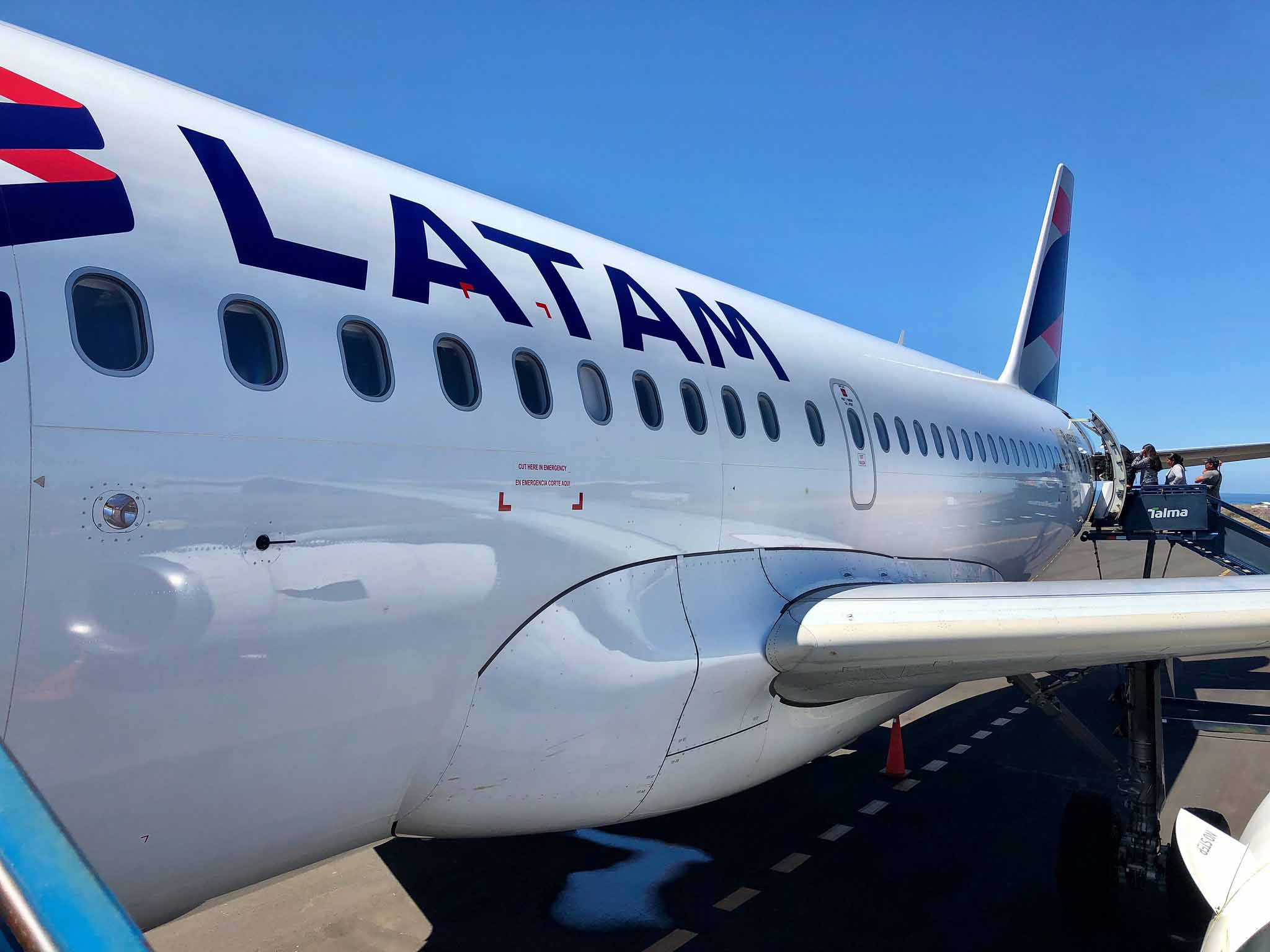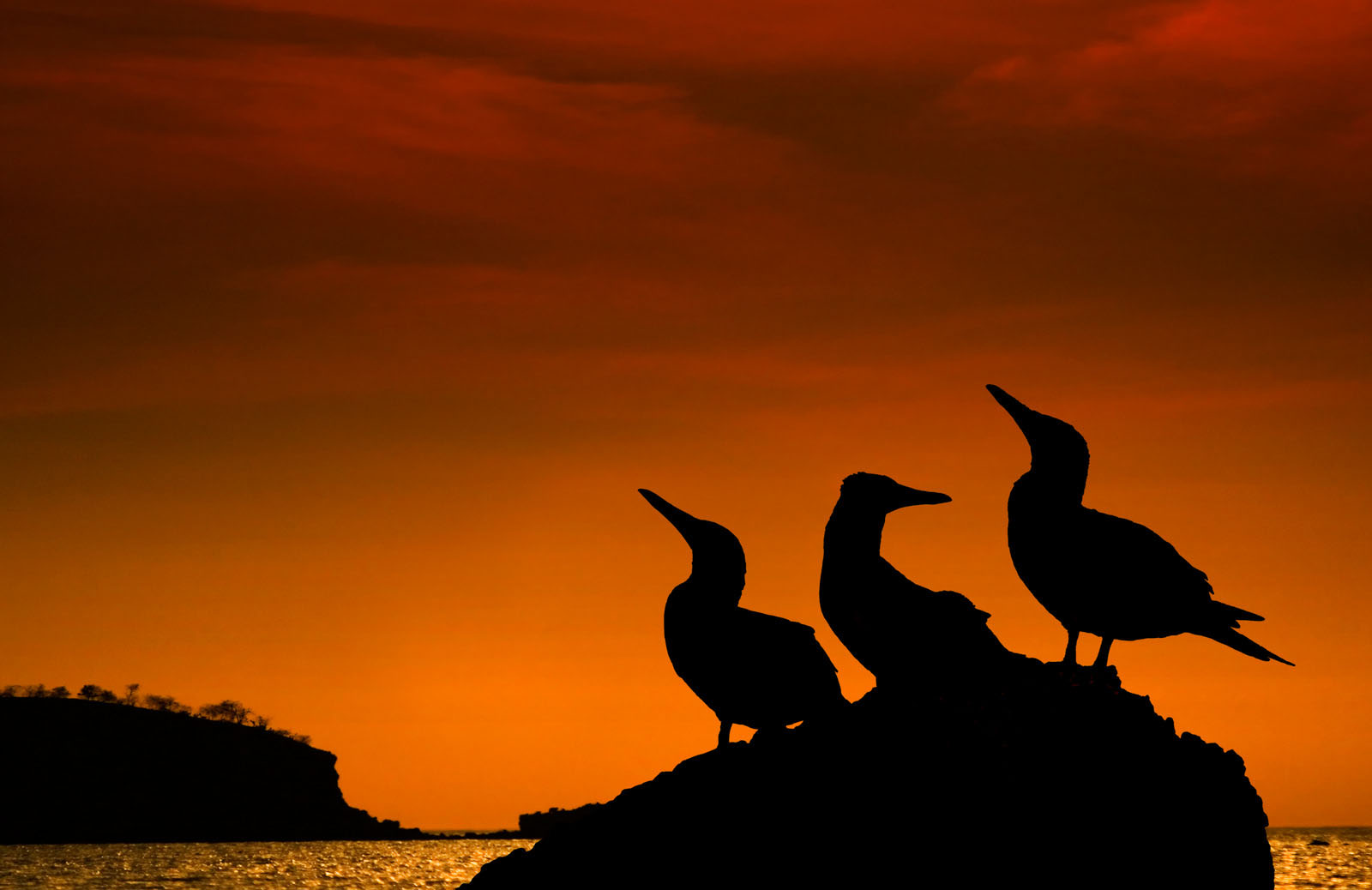Travel Guide
Major Islands
Smaller Islands
Ocean Rocks
The Ultimate Guide to Visiting the Galapagos Islands
The Galapagos Islands are a once-in-a-lifetime destination where you can come face-to-face with fearless wildlife and explore otherworldly volcanic landscapes found nowhere else on earth. This Ecuadorian archipelago is located 600 miles off the coast of South America in the Pacific Ocean. It’s renowned for its unique biodiversity, endemic species like giant tortoises, and its role in inspiring Charles Darwin’s theory of evolution.
Planning a trip here takes advance preparation, but the chance to snorkel with sea lions, hike atop ancient craters, and observe Darwin’s finches in their natural habitat is an adventure you’ll never forget. Our website is a full guide to help you plan the perfect Galapagos vacation.
A Brief History of the Galapagos Islands
The Galapagos Islands were formed by volcanic action over the past 4-5 million years. The oldest existing island, Española, is estimated to be around 3.5 million years old. The Galapagos archipelago consists of 13 major islands, 6 smaller isles, and over 100 rocks and islets.
Though uninhabited, the islands were known by indigenous South Americans and discoverd by the Spanish in the 16th century. The Galapagos get their name from the Spanish word for saddle, due to the shape of tortoise shells. The islands became part of Ecuador in 1832.
Charles Darwin brought scientific attention to the area after visiting in 1835. His observations of the differences between similar species on separate islands led to his groundbreaking theory of evolution by natural selection. Today, the Galapagos remain over 90% protected national park with conservation efforts focused on maintaining this one-of-a-kind ecosystem.
When to Visit the Galapagos Islands
The Galapagos have two distinct seasons:
Dry Season (June to December)
- Cooler, drier weather with average temperatures around 25°C.
- Ocean waters are colder with increased nutrient levels, attracting more wildlife.
- It is the ideal time to visit for the snorkeling and diving enthusiast. The downside is that the sea is not at its calmest.
- High tourist season, so attractions are busier.
Wet Season (January to May)
- Wildlife breeds during this time, so birdwatching and turtle nesting are at their peak.
- Ocean waters are warmer and clearer for swimming and snorkeling.
- Low tourist numbers, but heavier rains and calmer seas.
How To Get To and Around the Galapagos Islands
Getting to this remote archipelago involves flying into one of two small airports, Isla Baltra or Isla San Cristobal. Visitors then explore the islands either on a cruise or via daily boat trips and flights while staying in hotels on the inhabited islands.
Flights to the Galapagos
- Fly into Baltra or San Cristobal from Ecuador’s mainland cities of Guayaquil or Quito.
- Roundtrip flights take around 3 hours from the mainland and cost $400-$500.
- Arrive at least 1 day before any cruise departure to avoid missing the boat!

Getting Around By Cruise
- Multi-day cruises are the most popular and efficient way to experience the Galapagos.
- Cruise itineraries range from 3-7+ nights circumnavigating various islands.
- Most cruise ships depart from either Baltra or San Cristobal.
Recommended cruise lines: Celebrity Cruises, Lindblad Expeditions, Ecoventura, Latin Trails, Quasar.
Getting Around Independently
- Stay in hotels on inhabited islands then take day trips by boat or flight.
- Ferry services like the Expedition route islands hop between Santa Cruz, Isabela, Floreana.
- Inter-island flights allow you to see farther flung islands in less time.
Booking your trip with the help from a travel agent
Here are three key ways a travel agent can help plan an amazing Galapagos Islands trip:
- Recommend the optimal time to visit and tailor the perfect itinerary based on your interests, budget and preferences. Their expertise saves you research time.
- Get access to discounted rates and exclusive deals on flights, cruises, hotels, and packages that aren’t publicly listed.
- Handle logistics like permits, bookings, transportation, and provide local tips and recommendations. This allows you to make the most of your limited time on the islands.
Our Travel Guide is complete and will give you a step by step detail to planning a trip to the Galapagos Islands. Yet the Galapagos require intricate planning, and if you do not have a lot of time it is best left to a specialized agent. Their knowledge and connections lead to a dream trip full of once-in-a-lifetime wildlife encounters and scenery.
Recommended Travel Agents: Voyagers Travel Company, Peru For Less, Travel Edge, Adventure Smith Explorations.
Where To Stay in the Galapagos Islands
Most visitors stay on a cruise boat, but there are some hotel and eco-lodge options primarily on the four inhabited islands:
Santa Cruz
The most populous island with the widest variety of hotels, resorts, and budget options close to attractions like the Charles Darwin Research Station.
San Cristobal
Charming port town of Puerto Baquerizo Moreno with boutique hotels plus lodges in the highlands. Great base for scuba divers.
Isabela
Laidback island with scattered accommodation choices. Ideal for nature lovers and those who want a quieter experience.
Floreana
Smallest inhabited island with few hotels. Known for its black sand beaches and rich history as one of the first settled islands.
Eco-friendly Lodges
Offer close wildlife encounters in natural settings on islands like Santa Cruz, Isabela, and Floreana. Recommended options: Pikaia Lodge, Scalesia Lodge, Hotel Ikala.
Top Things To Do in the Galapagos Islands
The Galapagos offer endless opportunities to interact with wildlife and take in the archipelago’s striking volcanic formations. Top activities include:
Wildlife Viewing
See native and endemic animals thrive up close, like:
- Giant tortoises
- Blue-footed boobies and red-footed boobies
- Galapagos sea lions
- Marine iguanas
- Waved albatross
- Galapagos penguins
- Darwin’s finches
Snorkeling & Scuba Diving
Hiking & Land Tours
Relaxing on Beaches
Unwind on white or black sand beaches like Tortuga Bay, Las Bachas, Bartolome, and Gardner Bay.
Seeing Giant Tortoises
Visit reserves like El Chato on Santa Cruz to get up close to these gentle ancient giants.
Visiting the Charles Darwin Research Station
Insider Tips for Visiting the Galapagos
Follow these expert tips to make the most out of your Galapagos adventure:
- Avoid the crowds by going to lesser-visited islands like Española, Fernandina, Santiago, and Genovesa.
- Pack motion sickness tablets – boat rides between islands can be rough.
- Bring binoculars to better observe wildlife from shore and boats.
- Wear lightweight, quick-dry clothing. Temperatures are hot year-round.
- Don’t touch or feed the wildlife – be respectful of their habitat.
- Try delicious local foods like ceviche, encocado, or churrasco.
- Book cruises well in advance – ships fill up quickly, especially during high season.
- Purchase park passes and transit cards in advance through your travel agent.
- Pre-book day trips from your hotel or just take a cruise (cruises include all shore excursions) to avoid last-minute chaos.
Sample Itineraries for 5-7 Days in the Galapagos
With over a dozen islands to explore, it’s tough choose what to prioritize in just a few days. These sample itineraries will help jumpstart your planning:
5 Day Cruise Itinerary
Day 1: Arrive, visit highlands of Santa Cruz
Day 2: Snorkel with sea lions at Champion Islet off Floreana
Day 3: Española Island – hike Punta Suarez, snorkel at Gardner Bay
Day 4: Bartolomé Island – Pinnacle Rock, volcanic formations
Day 5: North Seymour Island to see boobies, marine iguanas
6 Day Cruise Itinerary
Day 1: Arrive, visit Tortuga Bay on Santa Cruz
Day 2: Snorkel with penguins off Bartolomé Island
Day 3: Genovesa Island – hike and birdwatching
Day 4: Santiago Island – Sullivan Bay lava fields
Day 5: Rábida Island’s red sand beach, coastal walk
Day 6: Santa Cruz Island highlights – tortoises, Darwin Station
7 Day Land-Based Itinerary
Day 1: Arrive, explore Santa Cruz Island
Day 2: Day trip to South Plaza Island
Day 3: Isabela Island – snorkel Concha y Perla lagoon
Day 4: Ferry to Floreana, relax on its black sand beach
Day 5: Day trip to Seymour Island’s wildlife
Day 6: Santa Cruz highlands, see giant tortoises
Day 7: Visit Fausto Llerena Breeding Center before departure
With its captivating mix of wildlife, landscapes, and adventure, the Galapagos deliver an incredible experience for nature lovers. Use these tips and itinerary ideas to plan your perfect trip!

Our Story
The GalapagosIslands.travel website is an interactive travel guide dedicated to help travelers plan their trip to the Galapagos Islands and Ecuador. This website will share pictures, videos and blogs of Galapagos travel experiences from the perspective of visitors, guides and travel companies.
ABOUT US
We are guides, photographers, writers, yet our main task is to offer help in planning Galapagos trips through creative story guides.
PASSION
We have a true love for these islands and are keen to sharing travel planning tips to help you organize your Galapagos vacation.
Amazing photo stories
Get inspiration from some of the worlds best wildlife photographers on our virtual tours of the archipelago.
Fun facts about the Galapagos Islands
Read through our stories and blogs to learn more about the isles of fire, our team of travel writers keep this site updated with first hand knowledge and essential tourism information. We are confident you will be able to plan a better trip once you read through our website.
See what your hotel or yacht looks like before you book.
The Islands are 1 hour behind Ecuador continental time.
WiFi is usually terrible, want to know were to get a good signal?.
The Galapagos are home to the only equatorial penguin species.
Being at the Equator you can visit 365 days a year.
The islands are not cheap, but we will tell you how to save money.